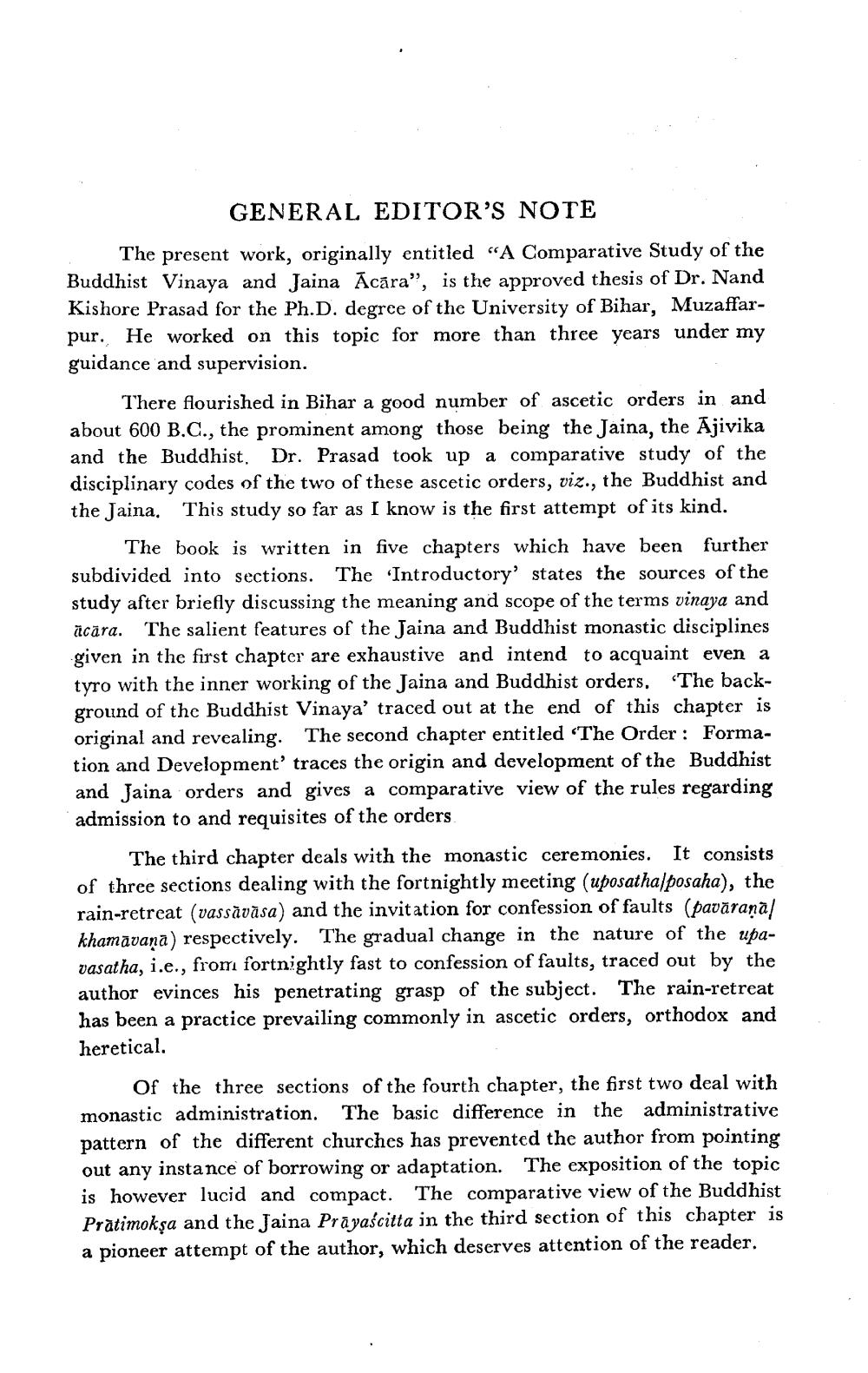Book Title: Studies in Buddhist and Jaina Monachism Author(s): Nand Kishor Prasad Publisher: Research Institute of Prakrit Jainology & Ahimsa Mujjaffarpur View full book textPage 8
________________ GENERAL EDITOR'S NOTE The present work, originally entitled “A Comparative Study of the Buddhist Vinaya and Jaina Ācāra", is the approved thesis of Dr. Nand Kishore Prasad for the Ph.D. degree of the University of Bihar, Muzaffarpur. He worked on this topic for more than three years under my guidance and supervision. There flourished in Bihar a good number of ascetic orders in and about 600 B.C., the prominent among those being the Jaina, the Ajivika and the Buddhist. Dr. Prasad took up a comparative study of the disciplinary codes of the two of these ascetic orders, viz., the Buddhist and the Jaina. This study so far as I know is the first attempt of its kind. The book is written in five chapters which have been further subdivided into sections. The Introductory' states the sources of the study after briefly discussing the meaning and scope of the terms vinaya and ācāra. The salient features of the Jaina and Buddhist monastic disciplines given in the first chapter are exhaustive and intend to acquaint even a tyro with the inner working of the Jaina and Buddhist orders. The background of the Buddhist Vinaya' traced out at the end of this chapter is original and revealing. The second chapter entitled “The Order : Formation and Development' traces the origin and development of the Buddhist and Jaina orders and gives a comparative view of the rules regarding admission to and requisites of the orders The third chapter deals with the monastic ceremonies. It consists of three sections dealing with the fortnightly meeting (uposatha posaha), the rain-retreat (vassāvāsa) and the invitation for confession of faults (pavārana/ khamāvana) respectively. The gradual change in the nature of the upavasatha, i.e., from fortnightly fast to confession of faults, traced out by the author evinces his penetrating grasp of the subject. The rain-retreat has been a practice prevailing commonly in ascetic orders, orthodox and heretical. Of the three sections of the fourth chapter, the first two deal with monastic administration. The basic difference in the administrative pattern of the different churches has prevented the author from pointing out any instance of borrowing or adaptation. The exposition of the topic is however lucid and compact. The comparative view of the Buddhist Prātimokşa and the Jaina Prāyaścitta in the third section of this chapter is a pioneer attempt of the author, which deserves attention of the reader.Page Navigation
1 ... 6 7 8 9 10 11 12 13 14 15 16 17 18 19 20 21 22 23 24 25 26 27 28 29 30 31 32 33 34 35 36 37 38 39 40 41 42 43 44 45 46 47 48 49 50 51 52 53 54 55 56 57 58 59 60 61 62 63 64 65 66 67 68 69 70 71 72 73 74 75 76 77 78 79 80 81 82 ... 306
